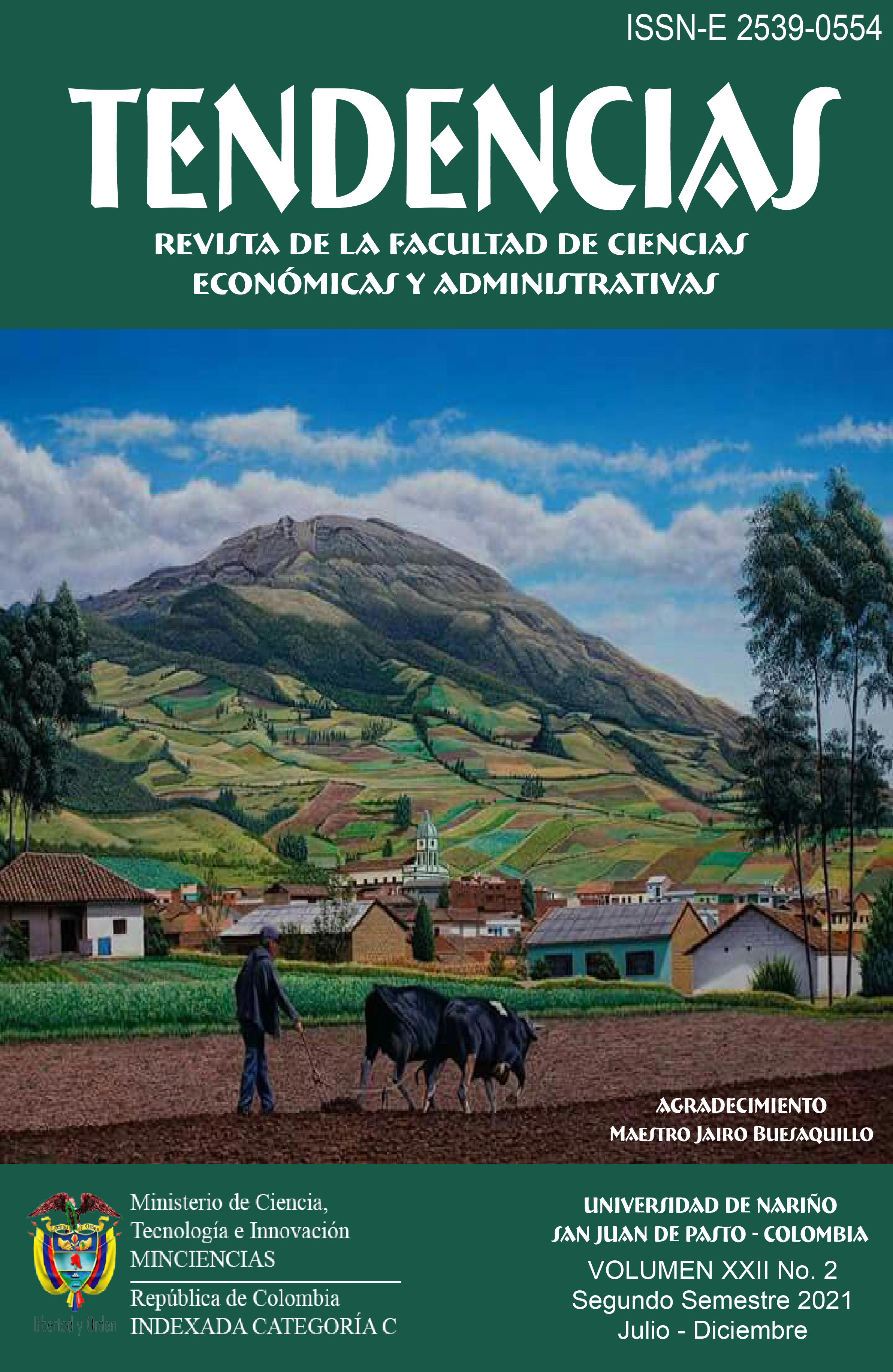Consumer perception of the impact of olfactory merchandising as a sensory marketing strategy
DOI:
https://doi.org/10.22267/rtend.212202.166Keywords:
consumer, marketing, merchandising olfactory, neuromarketingAbstract
The smell perception has been related to human behavior; however as a business, strategy is relatively new, in its application and measurement, therefore the main objective of the article is to understand the impact of olfactory merchandising as a sensory strategy on consumers. Applied field research of quantitative exploratory type and under analysis of descriptive data was carried out, they were consolidated through surveys by simple random sampling. In the main results it is evident that the preferred aromas are the relaxing olfactory notes, for consumers over 36 years of age, followed by citrus notes, for consumers under the age of 35 years of age; in the case of occupations, employees and entrepreneurs prefer relaxing aromas. Finally, the results showed people's acceptance and optimism for the brands and products they develop olfactory merchandising strategies.
Downloads
References
(1) Álvarez, R. (2011). Neuromarketing: seducir al cerebro con inteligencia para ganar en tiempos exigentes. Editorial Pearson.
(2) Alzate, M. y Lujan, D. A. (2017). PSICOLOGÍA Y MARKETING OLFATIVO. Una exploración desde la psicología sobre el impacto que ejerce en el consumidor el uso de odotipos. [Trabajo de Grado, Universidad de Antioquia] http://bibliotecadigital.udea.edu.co/bitstream/10495/14338/1/AlzateSandra_2017_PsicologiaMarketingOlfativo.pdf
(3) Bonadeo, M. J. (2005). ODOTIPO Historia natural del olfato y su función en la identidad de marca. Editorial Universidad Austral.
(4) Bushdid, C., Magnasco, M. O., Vosshall, L. B. & Keller, A. (2014). Humans can discriminate more than 1 trillion olfactory stimuli. Science, 343(6177), 1370–1372. https://doi.org/10.1126/science.1249168
(5) De Garcillán, M. (2015). Persuasión a través del marketing sensorial y experiencial. Opción, 31(2), 463–478. https://www.redalyc.org/pdf/310/31045568027.pdf
(6) Díez, C. M. (2013). Marketing Olfativo. ¿Qué olor tienes en mente? [Trabajo de Grado, Universidad de León]. https://buleria.unileon.es/handle/10612/2828
(7) Gómez, C. y García, M. (2012). Marketing sensorial: Cómo desarrollar la atmósfera del establecimiento comercial. Revista Distribución y Consumo. (122), 30-39. https://www.mercasa.es/media/publicaciones/196/1336046531_pag_030-040_Gomez.pdf
(8) Gómez, I. (2017). Marketing olfativo: de la emoción a la decisión. [Trabajo de Grado, Universidad de Valladolid]. http://uvadoc.uva.es/bitstream/handle/10324/24106/TFG-N.649.pdf?sequence=1&isAllowed=y
(9) Grisales, C. P. (2019). El marketing olfativo como posicionamiento de marcas. Tendencias, 20(2), 69–92. https://doi.org/10.22267/rtend.192002.123
(10) Hernández, M., Tomaseti, E. y Miranda, E. (2016). Marketing olfativo: la influencia del olor sobre la memoria. Anuario de Jóvenes Investigadores, 9(9), 244–247. http://hdl.handle.net/10317/5934
(11) Krishna, A. (2012). An integrative review of sensory marketing: Engaging the senses to affect perception, judgment and behavior. Journal of Consumer Psychology, 22(3), 332–351. https://doi.org/10.1016/j.jcps.2011.08.003
(12) Lersch, P. (1966). La estructura de la personalidad. Editorial Scientia.
(13) Lindstrom, M. (2005). Broad sensory branding. Journal of Product & Brand Management, 14(2), 84–87. https://doi.org/10.1108/10610420510592554
(14) López, C. (2017). Marketing sensorial: análisis de la percepción del consumidor en Starbucks. [Trabajo de Grado, Universidad de Sevilla]. https://idus.us.es/xmlui/handle/11441/66369
(15) Martineau, P. (1958). The personality of the retail store. Harvard Business Review, 36(1), 47-55.
(16) Palacios, P. (2016). ¿A qué huelen las marcas? marketing olfativo: potencial y casos de marcas que crean y usan olores para crear experiencias. [Trabajo de Grado, Universidad de Sevilla]. https://idus.us.es/handle/11441/52710
(17) Rodríguez, M. A. (2018). Odotipo: El aroma que identifica a la marca. [Trabajo de Grado, Universidad Peruana de Ciencias Aplicadas]. http://hdl.handle.net/10757/625508
Downloads
Additional Files
Published
How to Cite
Issue
Section
License
Those authors who have publications with this journal, accept the following terms:
This journal is licensed under a Creative Commons Reconocimiento-NoComercial 4.0 Internacional License. The articles can be copied, distributed, adapted and communicated publicly, as long as the credits of the work are recognized and the respective source is quoted. This work can not be used for commercial purposes.
To increase their visibility, documents are sent to databases and indexing systems.
The content of the items is the responsibility of each author, and does not compromise in any way, journal or institution.







































